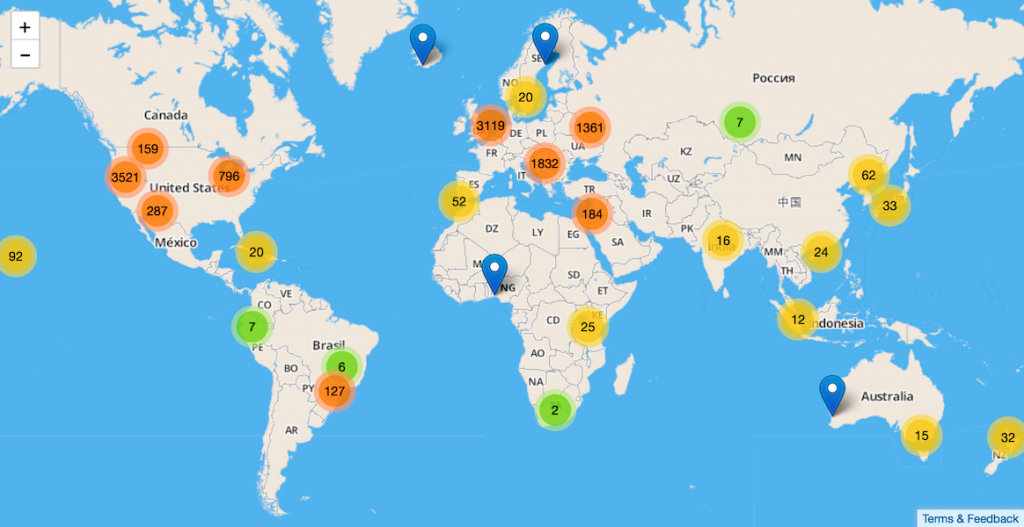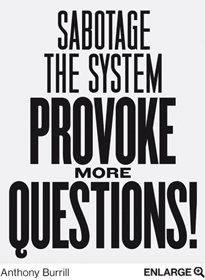The Living Library’s Selected Readings series seeks to build a knowledge base on innovative approaches for improving the effectiveness and legitimacy of governance. This curated and annotated collection of recommended works on the topic of linked data and the semantic web was originally published in 2013.
Linked Data and the Semantic Web movement are seeking to make our growing body of digital knowledge and information more interconnected, searchable, machine-readable and useful. First introduced by the W3C, Sir Tim Berners-Lee, Christian Bizer and Tom Heath define Linked Data as “data published to the Web in such a way that it is machine-readable, its meaning is explicitly defined, it is linked to other external data sets, and can in turn be linked to from external datasets.” In other words, Linked Data and the Semantic Web seek to do for data what the Web did for documents. Additionally, the evolving capability of linking together different forms of data is fueling the potentially transformative rise of social machines – “processes in which the people do the creative work and the machine does the administration.”
Selected Reading List (in alphabetical order)
- Harith Alani, David Dupplaw, John Sheridan, Kieron O’Hara, John Darlington, Nigel Shadbolt and Carol Tullo — Unlocking the Potential of Public Sector Information with Semantic Web Technology — a paper discussing the potential of using Semantic Web technology to increase the value of public sector information already in existence.
- Tim Berners-Lee, James Hendler and Ora Lassila — The Semantic Web — an introduction to the concept of the Semantic Web and its transformative potential.
- Christian Bizer, Tom Heath and Tim Berners-Lee — Linked Data – The Story So Far — a paper exploring the challenges, potential and successes of Linked Data almost a decade after its introduction.
- Li Ding, Dominic Difranzo, Sarah Magidson, Deborah L. Mcguinness and Jim Hendler — Data-Gov Wiki: Towards Linked Government Data — a look at the role of Semantic Web technologies in converting, enhancing and using linked government data.
- Evangelos Kalampokis, Michael Hausenblas and Konstantinos Tarabanis — Combining Social and Government Open Data for Participatory Decision-Making — a paper that proposes a data architecture for participatory decision-making based on linking subjective social data and objective government data.
- Kaiser Rady — Publishing the Public Sector Legal Information in the Era of the Semantic Web — an argument in favor of publishing public sector legal information as Linked Data.
-
Nigel Shadbolt, Kieron O’Hara, Tim Berners-Lee, Nicholas Gibbins, Hugh Glaser, Wendy Hall, and m.c. schraefel — Linked Open Government Data: Lessons from Data.gov.uk — a paper discussing the opportunities and challenges related to integrating Open Government Data onto the Linked Data Web.
-
Michael Vitale, Anni Rowland-Campbell, Valentina Cardo and Peter Thompson — The Implications of Government as a “Social Machine” for Making and Implementing Market-based Policy — a report discussing evolving role of government as a social machine and its potential to reimagine the relationship between citizens and government.
Annotated Selected Reading List (in alphabetical order)
Alani, Harith, David Dupplaw, John Sheridan, Kieron O’Hara, John Darlington, Nigel Shadbolt, and Carol Tullo. “Unlocking the Potential of Public Sector Information with Semantic Web Technology,” 2007. http://bit.ly/17fMbCt.
- This paper explores the potential of using Semantic Web technology to increase the value of public sector information already in existence.
- The authors note that, while “[g]overnments often hold very rich data and whilst much of this information is published and available for re-use by others, it is often trapped by poor data structures, locked up in legacy data formats or in fragmented databases. One of the great benefits that Semantic Web (SW) technology offers is facilitating the large scale integration and sharing of distributed data sources.”
- They also argue that Linked Data and the Semantic Web are growing in use and visibility in other sectors, but government has been slower to adapt: “The adoption of Semantic Web technology to allow for more efficient use of data in order to add value is becoming more common where efficiency and value-added are important parameters, for example in business and science. However, in the field of government there are other parameters to be taken into account (e.g. confidentiality), and the cost-benefit analysis is more complex.” In spite of that complexity, the authors’ work “was intended to show that SW technology could be valuable in the governmental context.”
Berners-Lee, Tim, James Hendler, and Ora Lassila. “The Semantic Web.” Scientific American 284, no. 5 (2001): 28–37. http://bit.ly/Hhp9AZ.
- In this article, Sir Tim Berners-Lee, James Hendler and Ora Lassila introduce the Semantic Web, “a new form of Web content that is meaningful to computers [and] will unleash a revolution of new possibilities.”
- The authors argue that the evolution of linked data and the Semantic Web “lets anyone express new concepts that they invent with minimal effort. Its unifying logical language will enable these concepts to be progressively linked into a universal Web. This structure will open up the knowledge and workings of humankind to meaningful analysis by software agents, providing a new class of tools by which we can live, work and learn together.”
Bizer, Christian, Tom Heath, and Tim Berners-Lee. “Linked Data – The Story So Far.” International Journal on Semantic Web and Information Systems (IJSWIS) 5, no. 3 (2009): 1–22. http://bit.ly/HedpPO.
- In this paper, the authors take stock of Linked Data’s challenges, potential and successes close to a decade after its introduction. They build their argument for increasingly linked data by referring to the incredible value creation of the Web: “Despite the inarguable benefits the Web provides, until recently the same principles that enabled the Web of documents to flourish have not been applied to data.”
- The authors expect that “Linked Data will enable a significant evolutionary step in leading the Web to its full potential” if a number of research challenges can be adequately addressed, both technical, like interaction paradigms and data fusion; and non-technical, like licensing, quality and privacy.
Ding, Li, Dominic Difranzo, Sarah Magidson, Deborah L. Mcguinness, and Jim Hendler. Data-Gov Wiki: Towards Linked Government Data, n.d. http://bit.ly/1h3ATHz.
- In this paper, the authors “investigate the role of Semantic Web technologies in converting, enhancing and using linked government data” in the context of Data-gov Wiki, a project that attempts to integrate datasets found at Data.gov into the Linking Open Data (LOD) cloud.
- The paper features discussion and “practical strategies” based on four key issue areas: Making Government Data Linkable, Linking Government Data, Supporting the Use of Linked Government Data and Preserving Knowledge Provenance.
Kalampokis, Evangelos, Michael Hausenblas, and Konstantinos Tarabanis. “Combining Social and Government Open Data for Participatory Decision-Making.” In Electronic Participation, edited by Efthimios Tambouris, Ann Macintosh, and Hans de Bruijn, 36–47. Lecture Notes in Computer Science 6847. Springer Berlin Heidelberg, 2011. http://bit.ly/17hsj4a.
- This paper presents a proposed data architecture for “supporting participatory decision-making based on the integration and analysis of social and government data.” The authors believe that their approach will “(i) allow decision makers to understand and predict public opinion and reaction about specific decisions; and (ii) enable citizens to inadvertently contribute in decision-making.”
- The proposed approach, “based on the use of the linked data paradigm,” draws on subjective social data and objective government data in two phases: Data Collection and Filtering and Data Analysis. “The aim of the former phase is to narrow social data based on criteria such as the topic of the decision and the target group that is affected by the decision. The aim of the latter phase is to predict public opinion and reactions using independent variables related to both subjective social and objective government data.”
Rady, Kaiser. Publishing the Public Sector Legal Information in the Era of the Semantic Web. SSRN Scholarly Paper. Rochester, NY: Social Science Research Network, 2012. http://bit.ly/17fMiOp.
- Following an EU directive calling for the release of public sector information by member states, this study examines the “uniqueness” of creating and publishing primary legal source documents on the web and highlights “the most recent technological strategy used to structure, link and publish data online (the Semantic Web).”
- Rady argues for public sector legal information to be published as “open-linked-data in line with the new approach for the web.” He believes that if data is created and published in this form, “the data will be more independent from devices and applications and could be considered as a component of [a] big information system. That because, it will be well-structured, classified and has the ability to be used and utilized in various combinations to satisfy specific user requirements.”
Shadbolt, Nigel, Kieron O’Hara, Tim Berners-Lee, Nicholas Gibbins, Hugh Glaser, Wendy Hall, and m.c. schraefel. “Linked Open Government Data: Lessons from Data.gov.uk.” IEEE Intelligent Systems 27, no. 3 (May 2012): 16–24. http://bit.ly/1cgdH6R.
- In this paper, the authors view Open Government Data (OGD) as an “opportunity and a challenge for the LDW [Linked Data Web]. The opportunity is to grow by linking with PSI [Public Sector Information] – real-world, useful information with good provenance. The challenge is to manage the sudden influx of heterogeneous data, often with minimal semantics and structure, tailored to highly specific task contexts.
- As the linking of OGD continues, the authors argue that, “Releasing OGD is not solely a technical problem, although it presents technical challenges. OGD is not a rigid government IT specification, but it demands productive dialogue between data providers, users, and developers. We should expect a ‘perpetual beta,’ in which best practice, technical development, innovative use of data, and citizen-centric politics combine to drive data-release programs.”
- Despite challenges, the authors believe that, “Integrating OGD onto the LDW will vastly increase the scope and richness of the LDW. A reciprocal benefit is that the LDW will provide additional resources and context to enrich OGD. Here, we see the network effect in action, with resources mutually adding value to one another.”
Vitale, Michael, Anni Rowland-Campbell, Valentina Cardo, and Peter Thompson. “The Implications of Government as a ‘Social Machine’ for Making and Implementing Market-based Policy.” Intersticia, September 2013. http://bit.ly/HhMzqD.
- This report from the Australia and New Zealand School of Government (ANZSOG) explores the concept of government as a social machine. The authors draw on the definition of a social machine proposed by Sir Nigel Shadbolt et al. – a system where “human and computational intelligence coalesce in order to achieve a given purpose” – to describe a “new approach to the relationship between citizens and government, facilitated by technological systems which are increasingly becoming intuitive, intelligent and ‘social.'”
- The authors argue that beyond providing more and varied data to government, the evolving concept of government as a social machine as the potential to alter power dynamics, address the growing lack of trust in public institutions and facilitate greater public involvement in policy-making.


